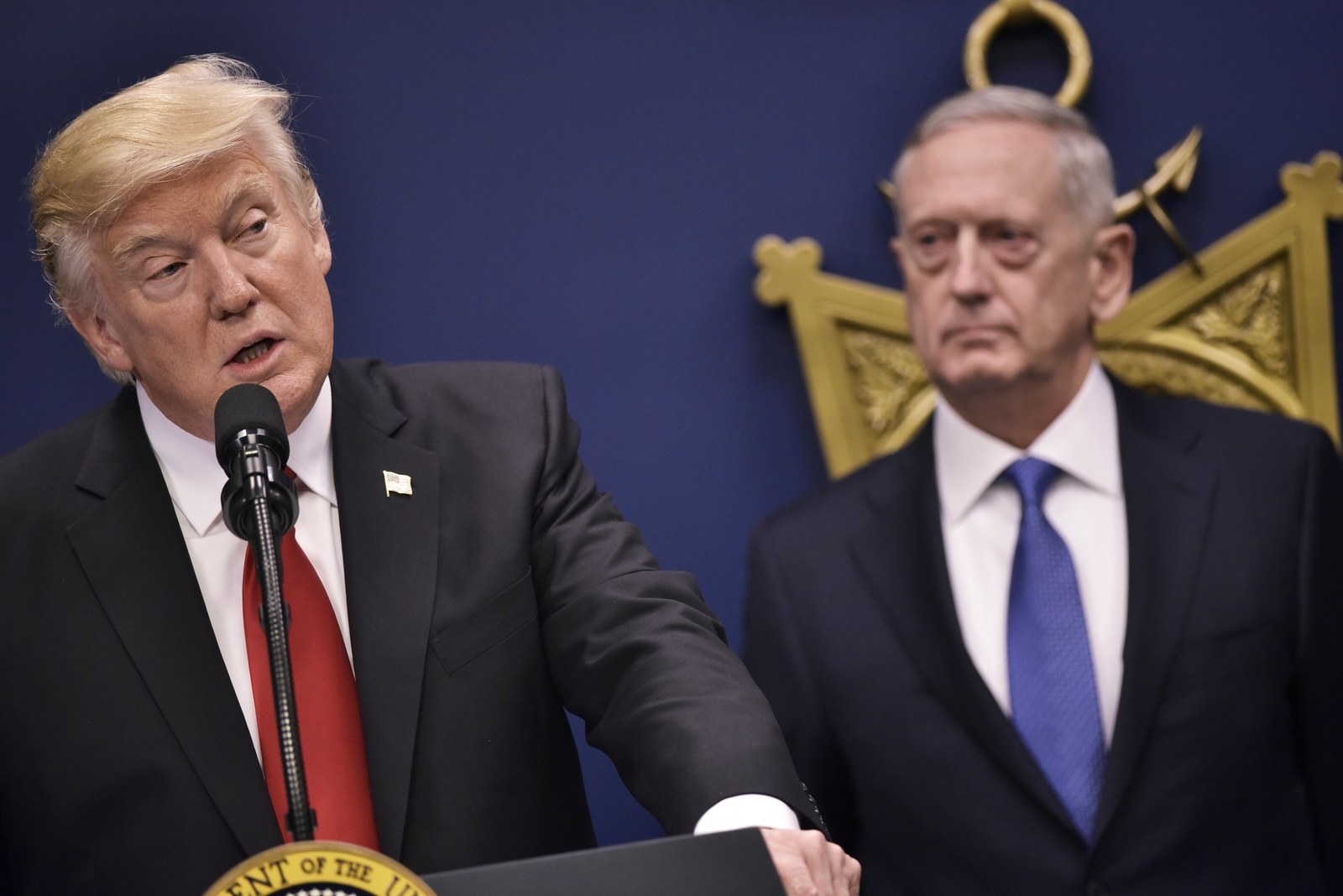
President Donald Trump’s first appearance at the Pentagon Friday was billed as the first step to rebuild what the presidential candidate had referred to as the “depleted” U.S. military.
But instead, the president who said he would reshape the military got an introduction to the ways his generals lead their forces. He showered the troops in the room repeatedly with praise, although he slipped when he called Defense Secretary Jim Mattis, a Marine veteran, “a tremendous soldier.” (Marines do not call themselves soldiers.) Behind closed doors, his commanders walked him through how the military divides the world into combatant commands, during what a defense official told reporters afterward was an informational session.
Watch Pence look over at Mattis when Trump calls the 44-year Marine a soldier. An honest gaffe, but dang. Pence has… https://t.co/6vo923PB0y
Trump capped off his visit by signing a three-page memo calling for an across-the-board review of military readiness, quite a formal procedure for a rather vague request.
“He is trying to take credit [for building a stronger military] by putting it in the form of a directive,” Lawrence Korb, a senior fellow at the Washington, D.C.-based Center for American Progress. “He is showing in charge.”
Trump signed the memo after Vice President Mike Pence ceremonially swore in Mattis, who formally took the job at the Pentagon on Friday. It was one of two executive actions the president signed; the second was an executive order that called for a 120-day suspension of refugees, part of his plan for “extreme vetting.”
Trump said he signed the military readiness memo “to begin a great rebuilding of the armed services of the United States, developing a plan for new planes, new ships, new resources and new tools for our men and women in uniform,” in a brief address at the Pentagon’s Hall of Heroes, which is dedicated to Medal of Honor recipients.

But the memo was vague, calling for the defense secretary to “assess readiness condition, including training, equipment maintenance, munitions, modernization and infrastructure.” The secretary has a month to “submit to the President a report identifying actions that can be implemented within the current fiscal year and that are necessary to improve readiness conditions. It also called for a review of missile defense against foreign threats.
(A draft that circulated in the hours before Friday’s ceremony was more specific, saying the military needed to be prepared to address the ISIS threat and any other confronting the United States.)
Regardless of the lacking specifics, the president’s words were welcomed at the Pentagon; attendees responded with a warm applause.
“Our military strength will be questioned by no one,” Trump said. “Neither will our dedication to peace.”
Before signing the document, Trump spent an hour with the Joint Chiefs of Staff in what is known as “the Tank,” a secure conference room usually used by the chiefs. In addition to an introduction to how the Joint Chiefs work, Trump and the generals talked about military readiness and how to accelerate the military campaign against ISIS, according to the defense official.
“It was a global walk around the world,” the defense official said, adding: “The chiefs did most of the talking.”
Throughout the presidential campaign, Trump signaled he wanted to expand the size of the US military. He has called for 60,000 more troops in the Army and 12,000 more Marines. He also has said the Navy should build 78 more submarines and ships and that the Air Force should have 100 combat aircraft.
Making those kind of expansions to the US military would take years, and the memorandum recognizes that, calling for the Defense Secretary to work with the Office of Management and Budget to adjust the budget.
It is not clear when such changes could be funded. There currently is no fiscal year 2017 budget; military spending is currently through a continuing resolution. And the fiscal year 2018 budget is now being developed. Given all the steps that must happen before such changes are approved, funding may not be allocated until the fiscal year 2019 budget.
